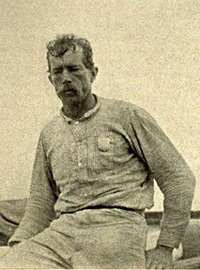
Guy Bradley
Art director
Guy Morrell Bradley (April 25, 1870 – July 8, 1905) was an American game warden and deputy sheriff for Monroe County, Florida. Born in Chicago, Illinois, he relocated to Florida with his family when he was young. As a boy, he often served as guide to visiting fishermen and plume hunters, although he later denounced poaching after legislation was passed to protect the dwindling number of birds. In 1902, Bradley was hired by the American Ornithologists' Union, at the request of the Florida Audubon Society, to become one of the country's first game wardens. Tasked with protecting the area's wading birds from hunters, he patrolled the area stretching from Florida's west coast, through the Everglades, to Key West, single-handedly enforcing the ban on bird hunting. Bradley was shot and killed in the line of duty, after confronting a man and his two sons who were hunting egrets in the Everglades. His much-publicized death at the age of 35 galvanized conservationists, and served as inspiration for future legislation to protect Florida's bird populations. Several national awards and places have been named in his honor.
Guy Morrell Bradley (April 25, 1870 – July 8, 1905) was an American game warden and deputy sheriff for Monroe County, Florida. Born in Chicago, Illinois, he relocated to Florida with his family when he was young. As a boy, he often served as guide to visiting fishermen and plume hunters, although he later denounced poaching after legislation was passed to protect the dwindling number of birds. In 1902, Bradley was hired by the American Ornithologists' Union, at the request of the Florida Audubon Society, to become one of the country's first game wardens.
Tasked with protecting the area's wading birds from hunters, he patrolled the area stretching from Florida's west coast, through the Everglades, to Key West, single-handedly enforcing the ban on bird hunting. Bradley was shot and killed in the line of duty, after confronting a man and his two sons who were hunting egrets in the Everglades. His much-publicized death at the age of 35 galvanized conservationists, and served as inspiration for future legislation to protect Florida's bird populations. Several national awards and places have been named in his honor.
Guy Bradley Movies & TV Shows - Watch Online













